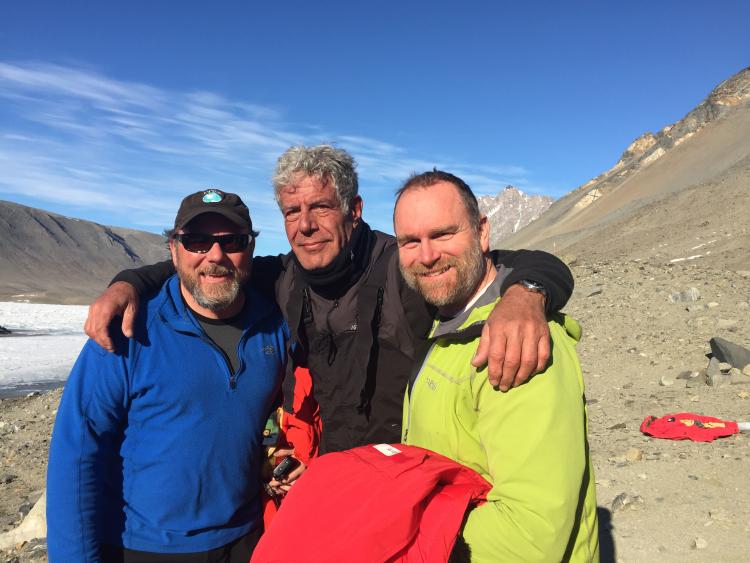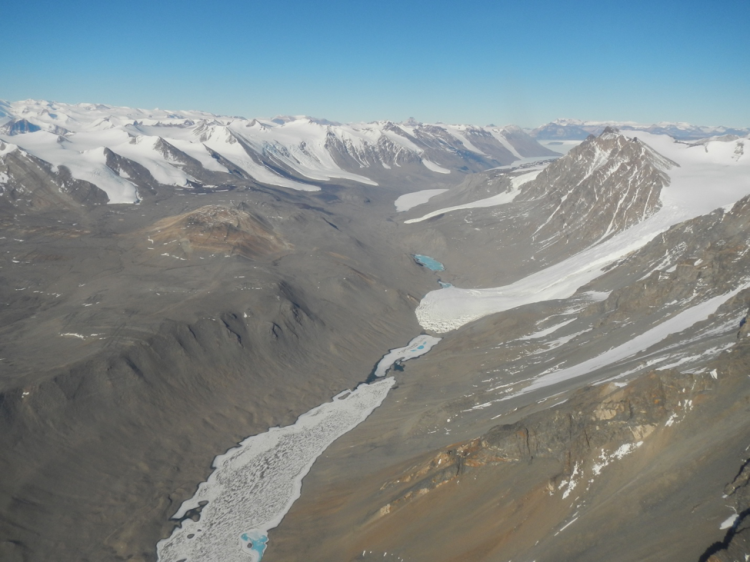Welcoming a Celebrity Chef to the Bottom of the World
As federally funded scientists and engineers, my colleagues and I help translate our research to public audiences, including students, policy makers, congressional representatives, and sometimes even celebrity chefs!
I am the principal investigator for a project that studies the ecosystem of a cold desert region of Antarctica. Earlier this year, we welcomed Anthony Bourdain, host of CNN’s Parts Unknown, and his production crew at the Lake Hoare field camp. When he arrived at McMurdo (the largest US base in Antarctica), the entire population (about 900 people) was excited to have a well-known chef and TV personality on station.

Antarctica is a starkly beautiful continent. While most of it is white, covered in snow and ice, there is a small corner of it (less than 1% of the continent) that is ice-free known as the McMurdo Dry Valleys. As the highest, driest, coldest, and windiest continent, Antarctica draws many people to its inhospitable landscape. I started my research career in Antarctica as a PhD student (at CU) in the late 1990s as a part of the McMurdo Long-Term Ecological Research Project (MCM LTER) - an interdisciplinary group of scientists seeking to understand how a polar desert ecosystem functions funded by the US National Science Foundation. The Dry Valleys are the closest landscape we have to that of Mars. The landscape is bare soil and rock, except for alpine glaciers, ephemeral streams, and ice-covered lakes.

Throughout my 11 seasons in Antarctica, I have had the opportunity to conduct direct outreach while at my field sites. I have interacted with many U.S. Congressional Representatives and Senators, who were familiarizing themselves with the US Antarctic Program (USAP). Our teams explain the significance of our research right there in the field, with glaciers and streams as real-world models to discuss our findings. The USAP also hosts writers and artists who have worked with our research teams, resulting in new art works and even novels. And then there are also media groups hosted by the USAP who travel to Antarctica to meet and interview field teams.
Our students were incredibly articulate in their responses to his questions. His team was professional and well-prepared for spending the night in tents, just like us, at our field camp. I am now the lead principal investigator for the MCM LTER project, and I was a bit nervous about how to get succinct and complete messages into our responses to his questions. It is important for our entire team that the few of us who were interviewed put our best foot forward – we were likely to be on national television!
After the formal interviews at lunch and dinner, we all relaxed. Bourdain played DJ with his iphone, blasting his favorite tunes. We eventually made our way out to a lake-side beach to play Frisbee as the midnight sun continued to light the night. In the end, I was impressed by the professionalism and level of care that Bourdain and his crew put into filming with us. Near as I can tell, we made the most of this great opportunity to reach a LOT of people. If you want to see the results, the episode of Parts Unknown on Antarctica will air on Sunday, June 4th on CNN.
Michael Gooseff is an associate professor in CU Boulder's Civil, Environmental and Architectural Engineering Department and at the Institute for Arctic and Alpine Research (INSTAAR). He's also the Principal Investigator for a National Science Foundation research program in Antarctica.

